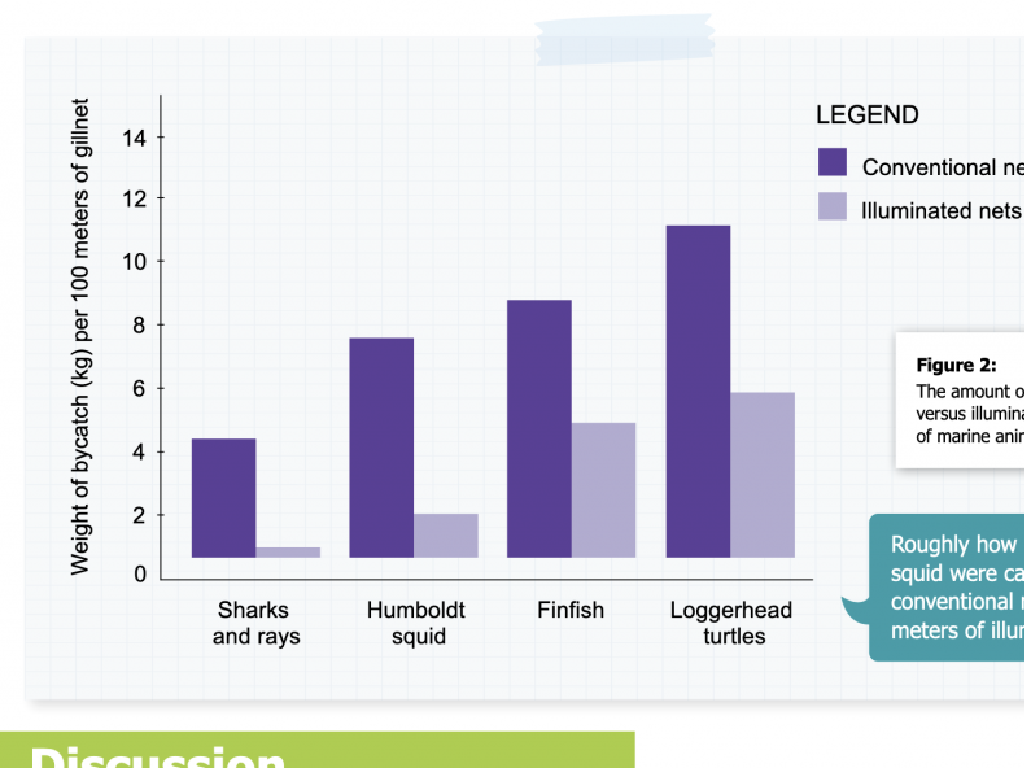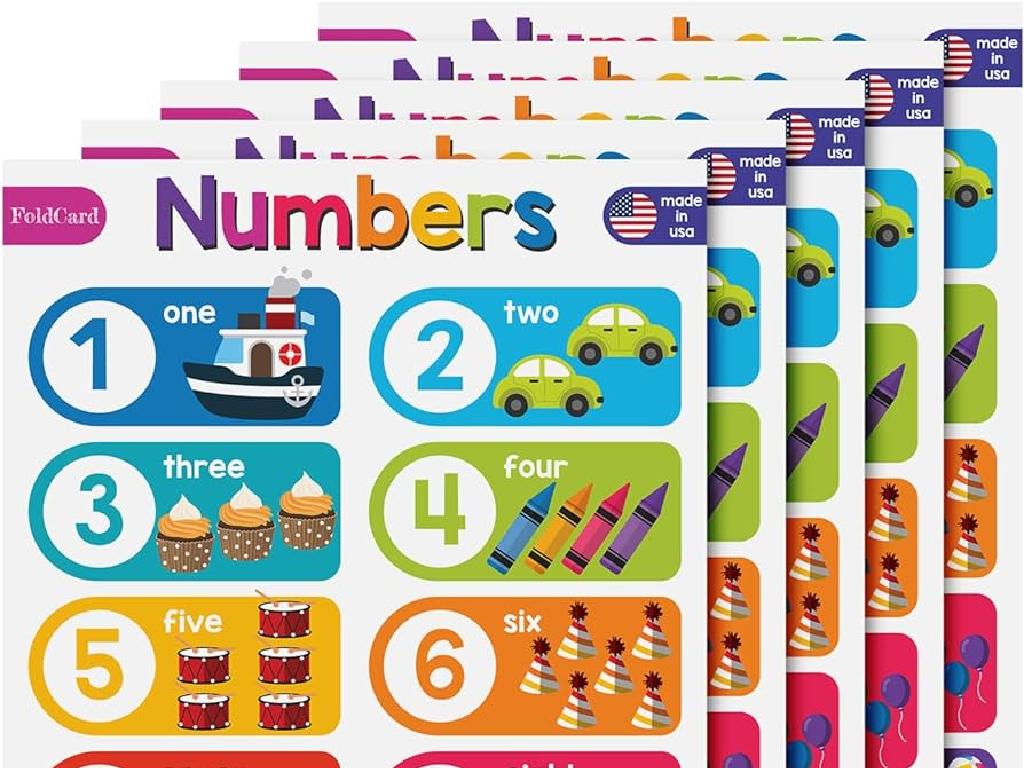Apply Multiplication And Division Rules
Subject: Math
Grade: Eighth grade
Topic: Rational Numbers
Please LOG IN to download the presentation. Access is available to registered users only.
View More Content
Welcome to Rational Numbers
– Define rational numbers
– Numbers expressed as a fraction of two integers
– Explore examples of rational numbers
– For instance, 1/2, -3/4, and 5 are all rational numbers
– Discuss the importance in math
– They are fundamental in various math concepts
– Apply rules in multiplication/division
– Understand how to multiply and divide them
|
This slide introduces the concept of rational numbers, which are any numbers that can be expressed as the quotient or fraction of two integers. The numerator and the denominator in the fraction are both whole numbers, with the denominator not being zero. Provide examples such as 1/2, -3/4, and 5 (which can be written as 5/1) to illustrate the concept. Emphasize the importance of rational numbers in mathematics as they are used in various fields such as algebra, geometry, and calculus. Explain the rules for multiplying and dividing rational numbers, such as multiplying the numerators together and the denominators together for multiplication, and flipping the second fraction and multiplying for division. Encourage students to practice these rules with different rational numbers to gain proficiency.
Multiplication with Rational Numbers
– Understand rules of multiplication
– Multiplication is commutative and associative.
– Multiplying positives and negatives
– Positive × Positive = Positive, Positive × Negative = Negative, Negative × Negative = Positive.
– Examples: Fractions and decimals
– Multiply numerators and denominators for fractions, align decimal points for decimals.
– Practice problems for mastery
|
This slide introduces students to the fundamental rules of multiplying rational numbers, including both fractions and decimals. Emphasize the commutative and associative properties of multiplication, which hold true for rational numbers. Clarify the rules for multiplying positive and negative numbers, ensuring students understand the resulting signs. Provide clear examples of multiplying fractions by multiplying the numerators and denominators separately, and for decimals, by aligning the decimal points. Conclude with practice problems to solidify their understanding and prepare them for more complex operations with rational numbers.
Division with Rational Numbers
– Understand rules of division
– Division is splitting into equal parts or groups. It is the result of ‘fair sharing’.
– Dividing positives & negatives
– A positive divided by a positive gives a positive, a negative divided by a negative gives a positive, and a positive divided by a negative gives a negative.
– Examples: fractions & decimals
– For fractions, multiply by the reciprocal. For decimals, align the decimal points.
– Practice problems
|
This slide aims to solidify the students’ understanding of division in the context of rational numbers. Start by reviewing the basic rules of division and how it can be thought of as ‘fair sharing’ or ‘grouping’. Emphasize the signs of the results when dividing positive and negative numbers. Provide clear examples of dividing fractions by multiplying by the reciprocal and aligning decimal points when dividing decimals. Conclude with practice problems to reinforce the concepts. Encourage students to solve these problems and discuss any difficulties they encounter.
Multiplication & Division with Rational Numbers
– Recap: Rules of Multiplication
– Multiply numerators and denominators. Same signs result in a positive product, while different signs give a negative product.
– Recap: Rules of Division
– Divide the numerators and denominators separately. Keep, change, flip the second fraction and multiply.
– Tips for Remembering Rules
– Use mnemonic devices or rhymes to help remember the rules and sign changes.
– Common Mistakes to Avoid
– Don’t forget to simplify. Watch out for sign errors and incorrect flipping of the second fraction in division.
|
This slide aims to consolidate students’ understanding of multiplication and division rules for rational numbers. Begin by reviewing the process of multiplying and dividing fractions and integers, emphasizing the importance of the signs. Provide students with memorable tips or tricks, such as rhymes or acronyms, to help them retain the rules. Highlight common errors, such as neglecting to simplify the final answer or mixing up the rules for multiplication and division. Encourage students to practice with examples and to always double-check their work for mistakes.
Practice Problems: Multiplication & Division
– Solve rational number multiplication
e.g., (3/4) x (2/3) = ?
– Divide rational numbers accurately
e.g., (5/6) ÷ (1/2) = ?
– Mixed multiplication & division exercises
Apply both operations in varied problems
– Review and discuss solutions
|
This slide is aimed at reinforcing the students’ understanding of applying multiplication and division rules to rational numbers. Start with multiplication problems, ensuring students remember to multiply numerators with numerators and denominators with denominators. Then, move on to division problems, reminding them to multiply by the reciprocal of the divisor. Mixed practice problems will challenge the students to decide which operation to use and to apply the correct rule. After the practice, review the problems as a class, discussing common mistakes and strategies for solving these types of problems. Encourage students to explain their reasoning for the solutions they found.
Real-World Applications of Rational Numbers
– Daily use of rational numbers
– Used for measuring, timing, and scoring
– Cooking with multiplication/division
– Double or halve a recipe using fractions
– Budgeting with rational numbers
– Allocate funds for expenses, savings
– Practice real-world problems
|
This slide aims to show students the practical applications of rational numbers in everyday life, emphasizing the importance of understanding multiplication and division rules. Rational numbers are used in various daily tasks such as measuring ingredients, keeping time, and scoring in games. In cooking, multiplying or dividing fractions is common when adjusting recipes. Budgeting involves allocating funds, which requires dividing total funds into portions for different expenses and savings. Encourage students to practice these skills with real-world problems to enhance their understanding and ability to apply math in practical situations. Provide examples such as adjusting a recipe for a different number of servings or creating a simple budget plan.
Class Activity: Math Relay Race
– Divide into small groups
– Solve multiplication/division problems
– Each group gets a set of problems involving rational numbers
– First to finish correctly wins
– Verify answers before declaring winners
– Encourages teamwork and speed
|
This activity is designed to promote collaborative learning and to reinforce the rules of multiplying and dividing rational numbers. Divide the class into small groups, ensuring a mix of abilities in each group. Provide each group with a set of problems that require them to apply multiplication and division rules to rational numbers. The first group to solve all their problems correctly wins. Make sure to have a variety of problems in terms of difficulty and to encourage students to work together, discussing the best approach to each problem. Possible variations of the activity could include a relay format where students take turns solving problems, or a ‘math scavenger hunt’ where each solved problem leads to the next.
Wrapping Up: Multiplication & Division of Rational Numbers
– Recap of multiplication/division rules
– Homework: Complete the practice worksheet
– Worksheet focuses on applying today’s lesson
– Apply rules to real-world problems
– Use examples like cooking or budgeting
– Encourage exploring more examples
|
As we conclude today’s lesson on the rules of multiplying and dividing rational numbers, provide students with a brief recap to reinforce their understanding. Assign a practice worksheet for homework that includes a variety of problems to ensure they can apply what they’ve learned. Encourage students to practice with real-world examples, such as adjusting a recipe (multiplication/division of fractions) or managing a budget (decimals). Remind them that understanding these concepts is crucial for everyday problem-solving. In the next class, we can review the homework answers and discuss any challenges faced.






